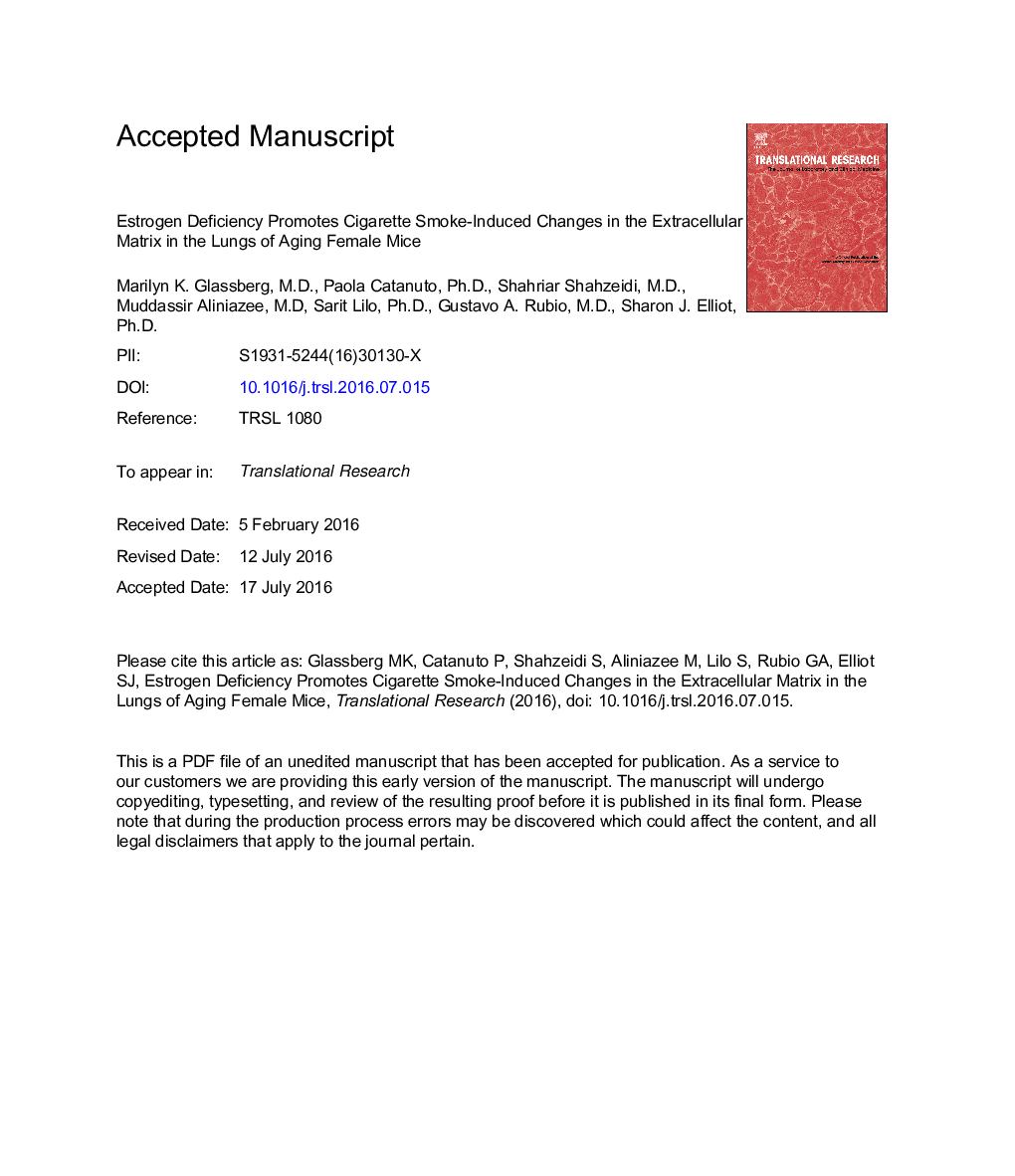| Article ID | Journal | Published Year | Pages | File Type |
|---|---|---|---|---|
| 5685121 | Translational Research | 2016 | 30 Pages |
Abstract
Female smokers have a faster decline in lung function with increasing age and overall develop a greater loss of lung function than male smokers. This raises the question of whether estrogen status in women affects susceptibility to cigarette smoke (CS)-induced lung disease. Mouse models suggest that female mice are more susceptible than males to CS-induced lung disease. Moreover, young CS-exposed female mice develop emphysema earlier than male mice. The purpose of this study was to characterize the relationship of estrogen status on the pattern and severity of CS-induced lung disease. In this study, 15-month-old female C57BL/6J mice were ovariectomized and administered either placebo (pla) or 17β-estradiol (E2, 0.025 mg) 2 weeks after ovariectomy. They were further divided into those that were exposed to CS and no-smoke controls (NSC). Mice were exposed to CS in stainless steel inhalation chambers 3 hours a day, 5 days a week for 6 months, and sacrificed after 24 weeks of CS exposure. Blood and urine were collected at sacrifice to measure estrogen and cotinine levels, a metabolite of nicotine. Uterine weight was recorded as an indicator of estrogen status. Results showed that CS in the absence of E2 induced a decrease in hydroxyproline content, macrophage number, and respiratory chain complex-1 protein. CS without E2 also resulted in an increase in matrix metalloproteinase-2 activity and apoptosis and a change in the ratio of estrogen receptor subtype. These findings were abrogated with administration of E2, suggesting that estrogen deficiency increases susceptibility to CS-induced lung disease.
Keywords
ECMNSCCyPPLAHClTSPTNFαPBSMMPMCP-1CML17β-estradiolROShydrochloric acidCOPDChronic obstructive pulmonary diseaseanalysis of varianceANOVAEnzyme-linked immunosorbent assayELISAtumor necrosis factor alphaTUNELCigarette smokeTIMPCytochrome P450Extracellular matrixterminal deoxynucleotidyl transferase-mediated dUTP nick-end labelingMatrix metalloproteinasesPhosphate-buffered salinecarbon monoxideTissue inhibitor of metalloproteinasesmonocyte chemotactic protein 1Placebototal suspended particulateReactive oxygen speciesEstrogen receptor
Related Topics
Health Sciences
Medicine and Dentistry
Medicine and Dentistry (General)
Authors
Marilyn K. Glassberg, Paola Catanuto, Shahriar Shahzeidi, Muddassir Aliniazee, Sarit Lilo, Gustavo A. Rubio, Sharon J. Elliot,
